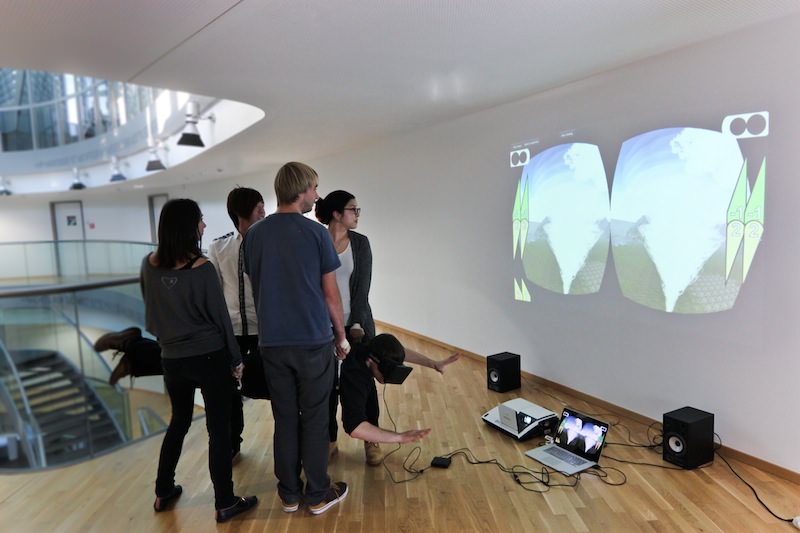
Developed by researchers at Germany’s Hasso Plattner Institute, a Haptic Turk 3D simulation device enables users to virtually experience activities like hang gliding. The virtual reality headset straps onto the user’s head where a virtual interaction occurs with the assistance of four people or “turkers.” This Haptic Turk motion platform makes the virtual reality seem more real by having the player lie down on two slings that are held by people. All motors and mechanical counterparts are replaced with humans that move the user depending on the virtual sequence that is happening. This technology debuted last week at the CHI Conference on Human Factors in Computing Systems.
The methodology behind it is simple. First, you put on the head-mounted device. Next, be prepared to embark on a virtual adventure while holding an iPad to display the immersive experience that’s viewed through the goggles. The external motion that jostles you comes from the four people responsible for human-actuating the situation. Four friends suspend you from midair as they follow the virtual instructions on their mobile phones to inform of timing, force, and proper motion. The physical motion that jibes with what’s going on behind the virtual reality glasses is being replicated by the players. For example, if an activity such as flying is being simulated, the four people will lift, swerve, push, and tilt the player’s body for a more realistic feeling.
The four “turkers” can watch in real time what’s going on behind the user’s goggles as the activity is projected onto a screen or sent to any smart device. This technology is reminiscent of various games that include motion including Wii Fit games, Just Dance, or Dance Dance Revolution. It will be interesting to see if the mass public will take future interest in this new virtual reality gadget.
Story via University of Potsdam
Advertisement





